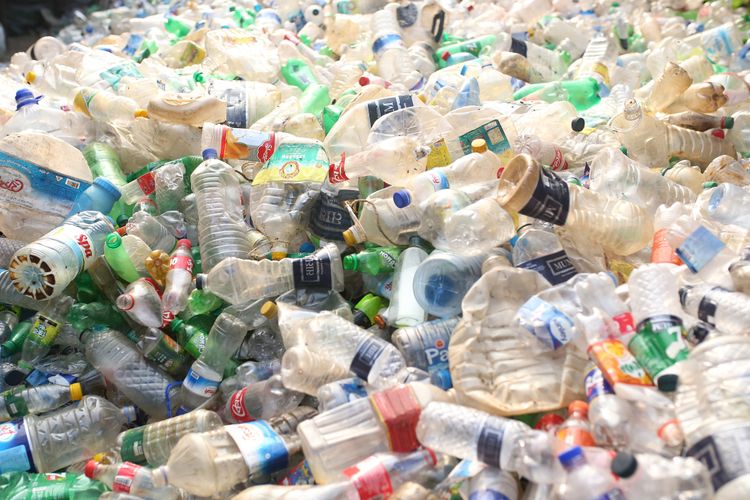Monday numbers: Earth Day 2024 and the environmental ...

Today in the 55th Earth Day – an annual commemoration that was, amazingly enough, conceived and launched in 1970 by an unlikely bipartisan pair of American politicians — Democratic U.S. Senator Gaylord Nelson of Wisconsin and Republican U.S. Representative Pete McCloskey of California.
The “history” section of the Earth Day website provides a powerful reminder of both how different that era was in many ways from our own – the anti-Vietnam War movement, for instance, was integral to the launch of the event — but also in other ways, (as an era that was then plagued by “oil spills, polluting factories and power plants, raw sewage, toxic dumps, pesticides, freeways, the loss of wilderness and the extinction of wildlife” and in which young people were deeply concerned about their future wellbeing), how much our two times have in common.
This is from the website:
“Inspired by the student anti-war movement, Senator Nelson wanted to infuse the energy of student anti-war protests with an emerging public consciousness about air and water pollution. Senator Nelson announced the idea for a teach-in on college campuses to the national media, and persuaded Pete McCloskey, a conservation-minded Republican Congressman, to serve as his co-chair.
…Nelson recruited Denis Hayes, a young activist, to organize the campus teach-ins and to scale the idea to a broader public, and they choose April 22, a weekday falling between Spring Break and Final Exams, to maximize the greatest student participation.”
The website relates that under the leadership of Hayes and the staff he put together, the movement took off and by its launch on April 22, 1970, “20 million Americans — at the time, 10% of the total population of the United States — [took to] the streets, parks and auditoriums to demonstrate against the impacts of 150 years of industrial development which had left a growing legacy of serious human health impacts.”
What’s more, the event immediately helped spark a flurry of progressive national policy change in Washington – a time in which Republican Richard Nixon served in the White House:
“By the end of 1970, the first Earth Day led to the creation of the United States Environmental Protection Agency and the passage of other first-of-their-kind environmental laws, including the National Environmental Education Act, the Occupational Safety and Health Act, and the Clean Air Act. Two years later congress passed the Clean Water Act.”
As people around the world commemorate Earth Day 2024, environmental degradation is, tragically, a vastly more serious threat than it was in 1970. Whether it’s the climate emergency and increasingly severe weather patterns it’s spurring, sea-level rise and desertification, global species extinction, water and air pollution, the spread of toxic “forever chemicals” like PFAS, the present generation has its work cut out for it.
One especially urgent issue to which the Earth Day website devotes special attention in 2024 is the plague of plastics and the global “60X40 movement” that seeks to reduce global plastic production 60% by the year 2040.
Here are some of the key facts identified:
9.1 billion – amount in tons of plastic produced since plastic was first introduced in 1950
79 – percentage of all plastic ever produced that still sits in landfills or the natural environment
50 billion – number of plastic water bottles (about 156 bottles per person) purchased by Americans each year
5 trillion – estimated number of plastic bags used globally every year
25 billion – number of Styrofoam coffee cups thrown away by American each year
14 million – amount of plastic in tons that ends up in the world’s oceans each year, much of it in the form of dangerous microplastics that
75 to 199 million – estimated amount of plastic in tons currently in the world’s oceans
2050 – the year at which it is estimated the combined weight of all plastic in the world’s oceans will exceed the combined weight of all fish in the oceans
More than 70,000 – average number of microplastic particles that each American ingests in their drinking water supply each year
As much as 23 times greater – the amount of terrestrial microplastic pollution compared to marine plastic pollution — pollution that contaminates the soil and waterways and enters the food chain when animals accidentally ingest it
99.9% – estimated efficiency of biologically-active slow sand filters, which are utilized in some water treatment plants for decontamination purposes, in removing microplastics from drinking water
80% – amount annual flows of plastic into the oceans could be reduced by 2040 through the application of existing approaches to reduce our consumption of single-use plastics and the adoption of eco-friendly alternatives
For more information on Earth Day and the above statistics, visit https://www.earthday.org/.
Our stories may be republished online or in print under Creative Commons license CC BY-NC-ND 4.0. We ask that you edit only for style or to shorten, provide proper attribution and link to our website. AP and Getty images may not be republished. Please see our republishing guidelines for use of any other photos and graphics.























































